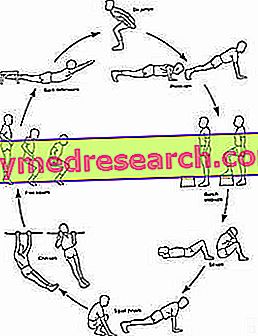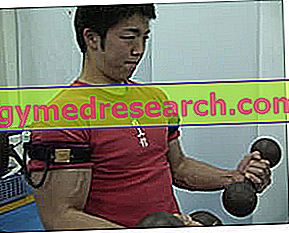By Dr. Davide Marciano Below I will give you an example of Heavy duty training: - MONDAY - Before training each muscle perform 2 or 3 sets of heating PANCA PIANA CROCI in superseries with PANCA PIANA DISTENSIONI 1 X 8 PULLOVER in superseries with LAT MACHINE AVANTI 1 X 8 REMOVED FOLDED LEGS 1 X 8 - FRIDAY - Before training each muscle perform 2 or 3 sets of heating SLOW NEXT in superseries with SIDE MOUNTS 1 X 8 CURL WITH ROCKER 1 X 8 NARROW BENCH 1 X 8 - TUESDAY - Before training each muscle perform 2 or 3 sets of heating LEG EXTENSION in superseries with LEG PRESS A 45 ° 1 X 8 CALF ON FOOT 1
Category training techniques
Circuit Training (AC) or Circuit Training (CT) is a training technique for FORCE born in England in 1957 and subsequently spread throughout the world. Traditional TRADITIONAL Circuit Training (AC) or Circuit Training (CT) is useful for improving the ability to produce and tolerate lactic acid at muscular level, as these two metabolic components are essential for the growth of STRENGTH / RESISTANCE TO STRENGTH
Running tests for speed conditioning in? Athletics are of three types: Short sprints on the 30m: starting in feet and from the blocks; stimulates the ability to accelerate; Progressive over distances of 60-80m: progressive acceleration up to 40m and speed maintenance; stimulates the perception of changes in the structure of the step
Introduction Fartlek means SPEED GAME; it is a sport training technique, introduced in 1930 by the Swedish coach Gösta Holmer, which finds a significant application in aerobic and mixed sports. The fartlek is based on parallel training of speed and resistance and currently it could be classified as a High Intensity (HI - high intensity) Interval Training (IT - interval training): signed HIIT .
Muscle strength is the ability of the human machine to face all those situations in which it is necessary to overcome a resistance or oppose it. Muscle strength is increased already in the first months of life, allowing us to carry out that obligatory course that brings us to the standing position in a short time and then walking
The Lafay method is a training technique invented by the Frenchman Olivier Lafay and described in the text: The Lafay method, 110 exercises without muscular tools ; the Lafay method has been coined for all sportsmen who want to get the most out of their muscles WITHOUT using overloads, tools or isokinetic machines
Edited by: Francesco Currò In setting up a training it is often necessary to take into account two needs: that of the multilaterality of the stimuli and that of the progression of the load. However, it often happens that these needs are opposed because of the specificity of the adaptation: how many of you - for example - will have noticed that you have lost "resistance" after a cycle of force?
By Dr. Francesco Cundo ' Speed: it is the expression of the highest dynamism of which man is capable and which engages him both in his mechanical parts and in the psycho-nervous component. The highest speed peaks recorded so far, in running sections, are around 12 meters / sec, or 43, 200 km per hour
By Dr. Luca Franzon "... You would sit among the spectators and observe the courage and physical beauty of men, their marvelous form, their impressive ability, their invincible strength and their indefatigable will to win ..." These are words spoken by Solon to Anacarsi in ancient Greece, where the concept of strength was already known and admired
Since I receive many messages requesting information on hybrid training protocols and it is not possible to answer everyone, I will try to give an exhaustive, albeit brief, answer in this article. The hybrid training program is a combination of training methods (between Heavy Duty - or HIT - with other methodologies) aimed at obtaining a high intensity in a restricted volume of work, with the aim of maximizing the damage to the myofibrillar structure, therefore to obtain an increase in the transverse diameter of the fibers (increase in muscle mass)
Curated by Alessandro De Vettor and Alessandro Cioffi Introduction Weight training is dealt with using the most diverse methods, some more valid than others, which are constantly developed and applied to achieve targeted objectives. A new training mode comes directly from Japan and is called Kaatsu training, or occlusive training











